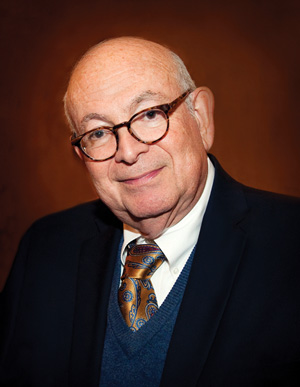Of Confederate flags and statues of anti-Semites
Published July 9, 2015
The legislature of South Carolina is in the process of voting this week on a request by Gov. Nikki Haley that the Confederate battle flag on the state Capitol grounds be taken down in the aftermath of the horrific massacre of nine worshippers at the historic Emanuel African Methodist Episcopal Church in Charleston, allegedly at the hands of a racist gunman who proudly posted photographs of himself with that flag in hand.
The flag in question originally flew from the top of the South Carolina Capitol building; it was placed there in 1961 not so much as a tribute to the valor of Confederate soldiers but as a gesture of defiance and a symbol of the infamous Jim Crow laws that deprived African-Americans of their basic civil rights, including the right to vote.
If the Confederate battle flag had been flying since the period after the Civil War, when memories of the epic battles of that conflict were still fresh and when the North and South were trying to heal, then perhaps it might have served some legitimate purpose. But the South Carolina flag was placed there in 1961 at the height of the American civil rights movement. Taking the flag down requires a two-thirds vote in each house of the South Carolina Legislature. The measure has already passed in the Senate, and it is hoped that it will also pass in the House, so that the flag which has come to symbolize South Carolina’s racist past, will come down.
ADVERTISEMENT
But how far should the removal of flags and monuments go? Should the monument to Confederate soldiers in Forest Park come down or be moved to a museum as some have demanded? Should universities, streets and highways, and public parks named after Confederate military officers be taken down? Should the Custis-Lee Mansion at the National Cemetery in Arlington, Virginia, erase the “Lee” from its official designation? And if Robert E. Lee’s family name is expunged because he led the Confederate army during the Civil War, should the names of George Washington and Thomas Jefferson be removed because each of them was a slave owner?
Do we as American Jews have similar concerns about statues and other public tributes to historic figures who are known to have been vicious anti-Semites? If so, we should be clamoring for Ukraine to remove its statue of Bogdan Chmielnicki who, in late spring of 1648, led a peasant revolt against Ukraine’s Polish rulers. Paul Johnson, in his one-volume “A History of the Jews,” writes:
“But the principal animus was directed against the Jews, with whom the peasants had the most contact. … Thousands of Jews from the villages and shtetls scrambled for safety.”
ADVERTISEMENT
In all, according to Johnson, about 6,000 Jews were massacred in the affected town. Despite this well-documented anti-Jewish bloodbath, a defiant equestrian statue of Chmielnicki stands in the town square in Kiev. Should not that statue be removed despite the fact that its subject is a hero to many Ukrainians?
The statue dilemma strikes closer to home. St. Louis is named in honor of the French King Louis IX, the patron saint of Louis XV. Historian Johnson describes Louis IX, whose statue appears atop Art Hill in Forest Park, as “a crusader and anti-Semite, (who) was the only monarch to cooperate with (Pope Gregory IX) in the pope’s ban on the Talmud and fulminations against European Jews.”
The French monarch after whom our fair city is named is quoted by Johnson as having said that “the best way to argue with a Jew was to plunge a sword in him.”
Even harsher indictments against King Louis IX (1226-1270) are detailed in a comprehensive article on France in the Encyclopedia Judaica (1972 edition). The article states: “During the reign of Louis IX, severalanti-Jewish persecutions took place in 1236 in the western provinces. … The king, ostentatiously scrupulous of benefitting from money earned from the sin of usury, dedicated it to the financing of the Crusade.”
Also noted is that Louis IX and Alphonse of Poitiers rivaled one another in their brutal methods of extorting money from the Jews.
I would not advocate removing the statue of King Louis IX from its prominent place atop Art Hill. Vandals over the years have stolen his sword, which was a kind of posthumous punishment for the anti-Jewish tyrant. Reasonable people on both sides of this issue can disagree on whether there should be a statute of limitations on statue and monument removal.
From a historical viewpoint, the Confederate battle flag in South Carolina and the statues of anti-Jewish historic figures in Kiev and St. Louis provide useful “teachable moments” for the entire community.
















